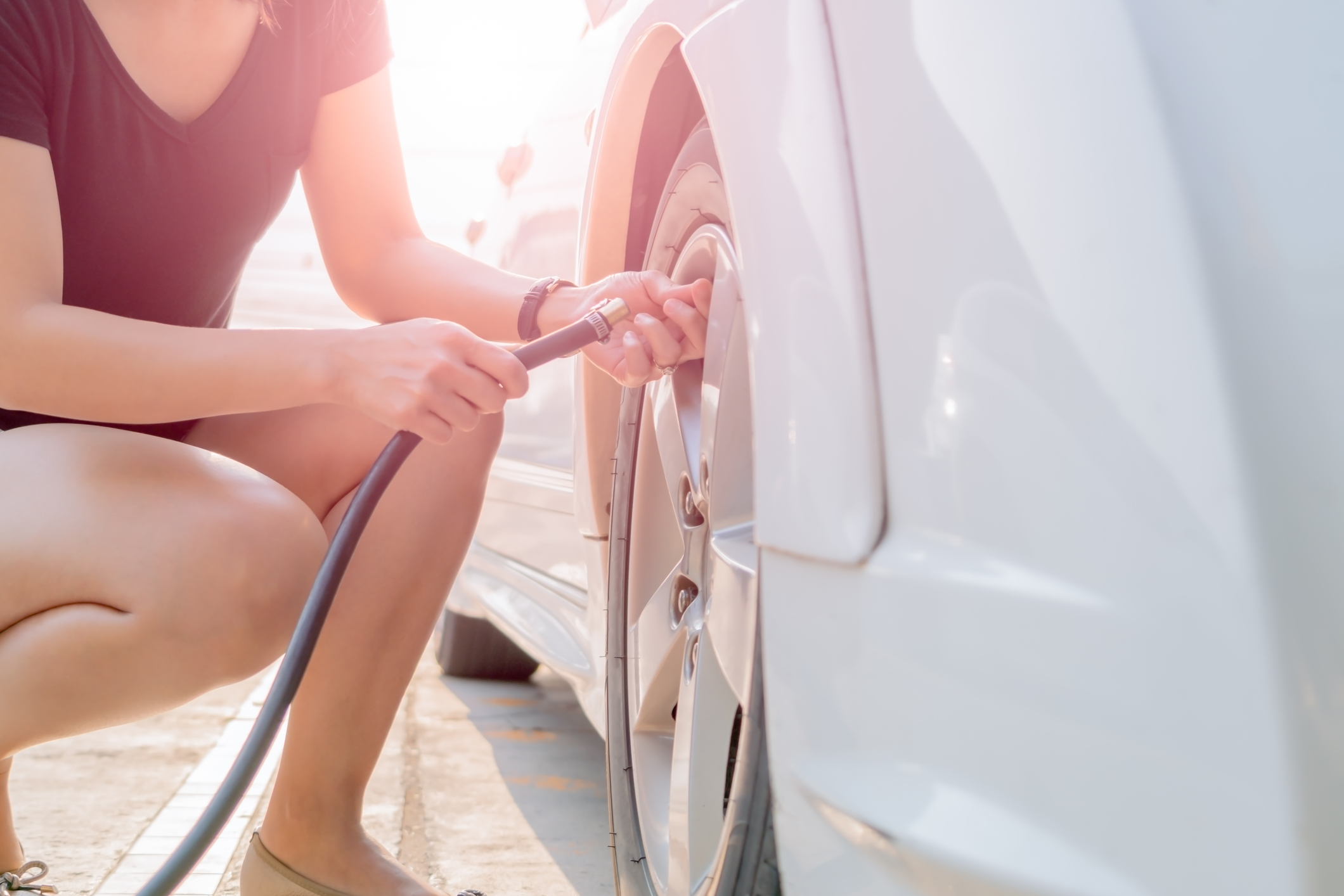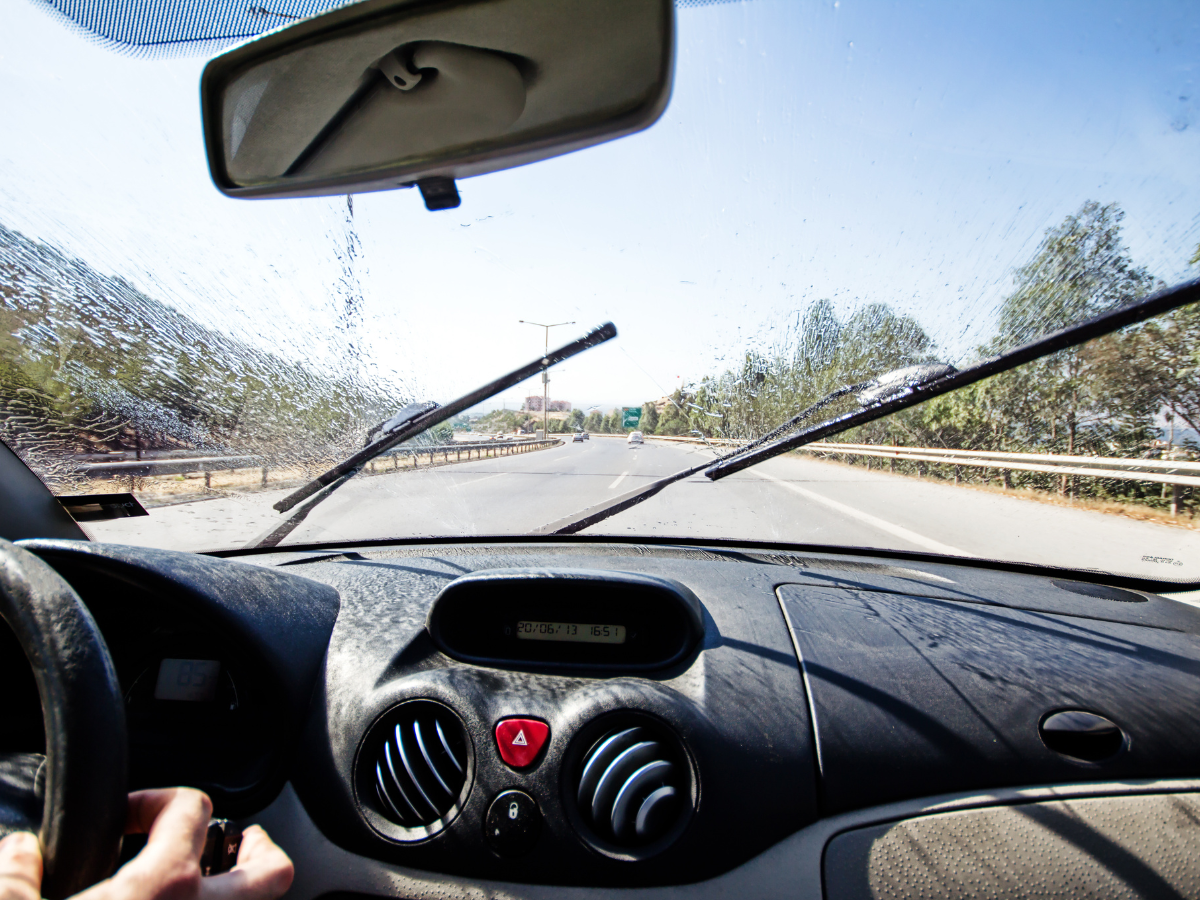The Importance of Proper Tire Pressure

How often to check tire pressure is a question that many drivers ask, but few actually know the answer to. Proper tire pressure is crucial for the safety, performance, and efficiency of your vehicle.
Having the right amount of air in your tires is so much more than getting that annoying tire pressure warning light to turn off. Over inflate your tires, and you can lessen your tires’ grip and traction, under inflate and you can cause your tires to heat up and get overstressed easily. Aside from safety concerns, tire pressure can also affect the fuel economy of your car, giving you poor gas mileage.
In this comprehensive guide, we will discuss the importance of maintaining correct tire pressure, factors that affect it, and how to ensure you’re always driving with optimal pressure.
Factors That Affect Tire Pressure: The Unsung Heroes of Your Car’s Performance
Various factors can influence how often to check tire pressure. These include:
Temperature
Altitude
Driving habits
Changes in any of these factors can cause your tire pressure to fluctuate, potentially affecting your vehicle’s performance, fuel efficiency, and safety.
Recommended Tire Pressure for Your Vehicle: Know Your Car’s Sweet Spot
Understanding the recommended tire pressure for your vehicle is essential when it comes to maintaining optimal performance. You can find this information in your car’s owner’s manual or on the tire placard located on the driver’s side door jamb. It’s crucial to follow these guidelines to ensure your safety and your vehicle’s efficiency.
How to Check Tire Pressure: The Art of the Perfect PSI
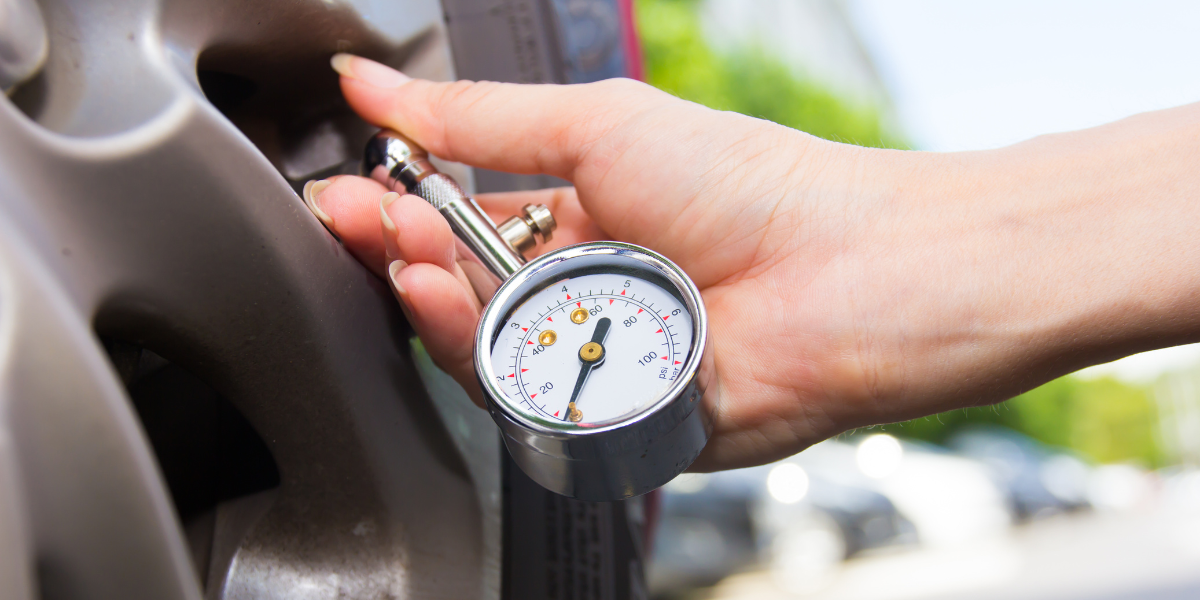
To determine how often to check tire pressure, you first need to know how to do it correctly. All you need is a tire pressure gauge, which can be either digital or analog. Simply remove the valve cap from your tire, press the gauge onto the valve, and read the pressure displayed on the gauge.
When to Check Tire Pressure: Timing is Everything
Knowing when to check tire pressure is just as important as knowing how often to do it. The best time to check is in the morning or when your car has been sitting for a few hours, as the tires will be cold and give the most accurate reading. Avoid checking immediately after driving, as the heat generated can cause the pressure to read higher than it actually is.
How Often Should I Check the Air Pressure in My Tires? The Million-Dollar Question
So, how often to check tire pressure? The general recommendation is to check it at least once a month and before long trips. However, it’s wise to check more frequently if you drive on rough roads, carry heavy loads, or have a history of tire problems.
Although the eye test can be helpful it’s not enough to rely on the visual appearance of your tires. To ensure that they are properly inflated, it’s useful to test regularly. Some experts recommend checking every time you fill up at the gas station but many dealer sites recommend checking your tires with a gauge at least once a month.
To check the air in your tires you can purchase a tire pressure checker or check to see if your local gas station has one. Many gas stations will charge you a few quarters to check and fill your tires with air.
Ideally, you will wait several hours after driving before actually checking your tire pressure, this will allow your tires to cool down and give a more accurate reading. If you aren’t checking the pressure at your home, look for the closest one possible to keep your tires from heating up too much.
Signs That Your Tires Need Air: Reading Between the Lines
If you’re wondering how often to check tire pressure, it’s essential to recognize the signs that your tires need air. Some common indicators include:
Decreased fuel efficiency
Uneven tire wear
Poor handling
Tire squealing on turns
How Much Air Should I Put in My Tires? The Balancing Act of Tire Pressure
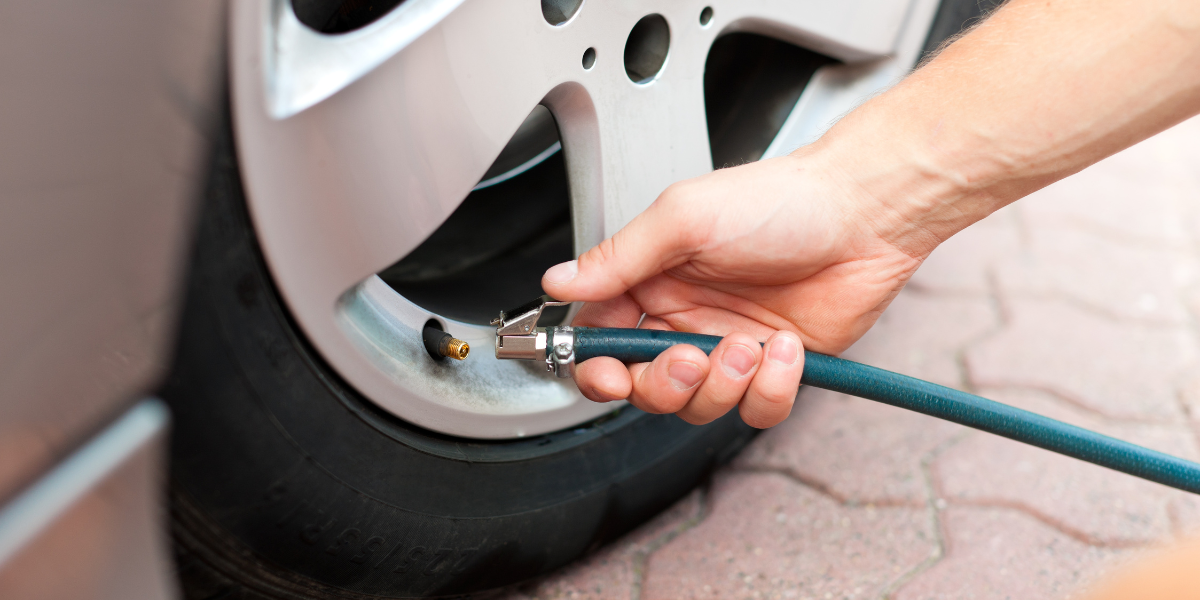
When it comes to how often to check tire pressure, knowing how much air to put in your tires is crucial. Always follow the manufacturer’s recommendations, as overinflating or underinflating can lead to decreased performance and potential tire failure.
That being said, standard tire pressure typically ranges from 30-35 PSI (Pounds per Square Inch).
To find the proper amount of required air pressure for your tires, you can usually check either the car’s user manual, or the sticker on the inside of the driver side door jamb. Cars.com warns against going off the number listed directly on the tire, this is usually “the maximum pressure the tire can hold, not the recommended pressure for the vehicle.”
It’s important to be even more vigilant during the fall/winter months as cold temps can cause drastic fluctuations in your tire pressure. If the temps drop overnight you could lose several PSI overnight.
Consequences of Driving with Incorrect Tire Pressure: Don’t Play with Fire
Ignoring how often to check tire pressure can have serious consequences. Driving with incorrect tire pressure can lead to:
-Uneven tire wear
-Poor fuel efficiency
-Decreased handling
-Tire blowouts
All of these issues put your safety at risk.
Tips for Maintaining Proper Tire Pressure: Your Roadmap to Success
To ensure you’re checking tire pressure often enough, follow these tips:
-Check at least once a month
-Be aware of factors that can affect pressure
-Always follow the manufacturer’s recommendations for proper inflation.
Frequently Asked Questions About Tire Pressure: Clearing the Air on How Often to Check Tire Pressure
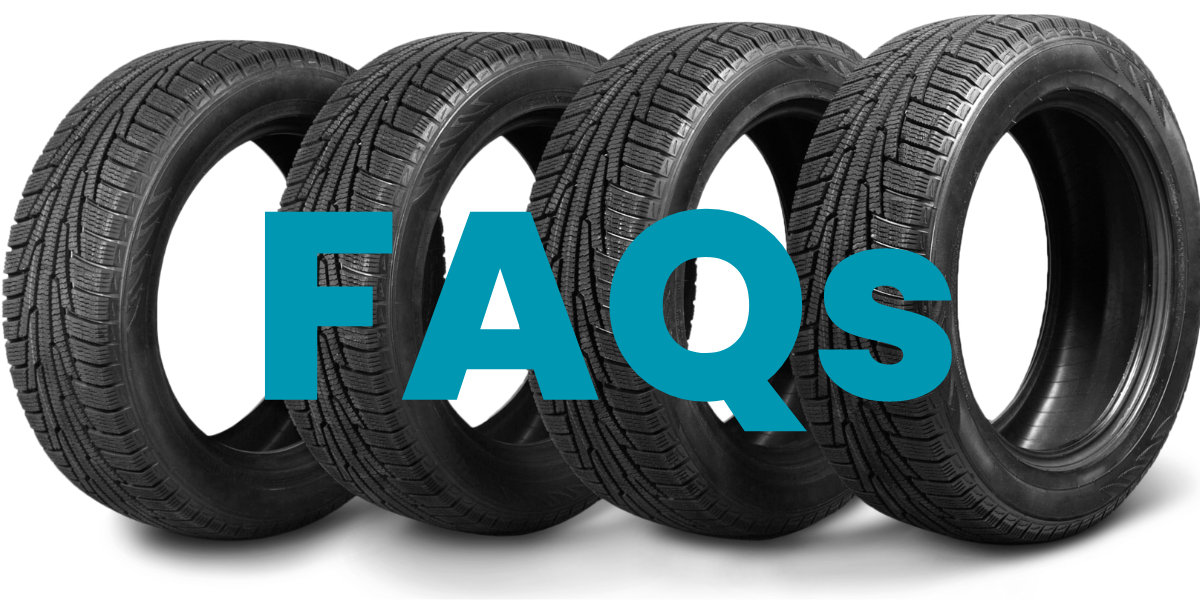
In this section, we will answer some common questions about tire pressure, such as how often to check tire pressure, how to find the recommended pressure for your vehicle, what to do if you have a slow leak, and how to handle tire pressure monitoring system alerts. By understanding these frequently asked questions, you can confidently manage your tire pressure and maintain your vehicle’s performance, and confidently manage your vehicle’s tire health.
1. How often should I check my tire pressure?
As a general rule, you should check your tire pressure at least once a month and before long trips. However, it’s a good idea to check more frequently if you drive on rough roads, carry heavy loads, or have experienced tire problems in the past.
2. Where can I find the recommended tire pressure for my vehicle?
You can find the recommended tire pressure for your vehicle in your owner’s manual or on the tire placard located on the driver’s side door jamb. Always follow these guidelines to ensure optimal performance and safety.
3. What should I do if my tire pressure is too low?
If your tire pressure is lower than the manufacturer’s recommendation, inflate your tires to the correct pressure using an air compressor. Many gas stations offer air compressors for public use, or you can purchase a portable one for your own convenience.
4. What should I do if my tire pressure is too high?
If your tire pressure is higher than the manufacturer’s recommendation, release some air from the tire until you reach the correct pressure. Use a tire pressure gauge to ensure accuracy.
5. Can weather affect my tire pressure?
Yes, weather can have a significant impact on your tire pressure. For every 10-degree change in temperature, tire pressure can be affected by 1 PSI. This is why it’s essential to know how often to check tire pressure, especially during seasonal changes.
6. How does incorrect tire pressure affect my vehicle’s performance?
Incorrect tire pressure can lead to decreased fuel efficiency, uneven tire wear, poor handling, and even tire blowouts. This is why it’s crucial to understand how often to check tire pressure and maintain the recommended pressure for your vehicle.
7. What is a tire pressure monitoring system (TPMS), and how does it work?
A tire pressure monitoring system (TPMS) is an electronic system designed to monitor the air pressure inside your vehicle’s tires. It alerts you with a warning light on your dashboard if any of your tires are underinflated or overinflated. This can help you stay informed about your tire pressure, but it’s still essential to know how often to check tire pressure manually for the most accurate readings.
8. Can I use the same tire pressure for all types of tires on my vehicle?
No, different types of tires may require different pressure levels. Always follow the manufacturer’s recommendations for each specific tire type to ensure optimal performance and safety.
9. How do I know if my tire has a slow leak?
A slow leak can be difficult to detect, but some signs include consistently low tire pressure, even after inflating to the correct level, or a tire that appears slightly deflated compared to the others. If you suspect a slow leak, it’s best to have your tire inspected and repaired by a professional.
10. Can I drive on a flat tire?
Driving on a flat tire can be dangerous and cause severe damage to both the tire and your vehicle. If you experience a flat tire, pull over to a safe location as soon as possible and replace the tire with a spare or call for roadside assistance.
Understanding these frequently asked questions about tire pressure, including how often to check tire pressure, will enable you to confidently manage your tire pressure and maintain your vehicle’s performance, safety, and efficiency.
🤓 Fun Facts About Tire Pressure: How Often to Check Tire Pressure for a Smooth Ride
Did you know that tire pressure can have a significant impact on your car’s performance and safety? In this section, we will share some fun facts about tire pressure, like how every 10-degree change in temperature can affect tire pressure by 1 PSI, and how underinflated tires can cause up to a 3% decrease in fuel efficiency.
When pondering how often to check tire pressure, it’s fascinating to uncover some lesser-known facts that highlight the importance of this crucial aspect of car maintenance. For instance, did you know that every 10-degree Fahrenheit change in temperature can alter your tire pressure by 1 PSI? This means that seasonal shifts can significantly impact your tire pressure, making it even more essential to check it regularly. Additionally, maintaining proper tire pressure can improve your fuel efficiency by up to 3%, helping you save money at the pump. So, not only does knowing how often to check tire pressure contribute to a safer and smoother ride, but it also has economic and environmental benefits.
Understanding how often to check tire pressure can reveal even more exciting facts that emphasize the significance of tire maintenance. For example, proper tire pressure can enhance your vehicle’s handling and braking capabilities, making it more responsive and safer to drive. Furthermore, maintaining the correct tire pressure can extend the life of your tires by up to 25%, saving you money in the long run by reducing the need for frequent replacements.
Another interesting tidbit is that over 50% of drivers on the road have at least one underinflated tire, which can be dangerous and negatively affect vehicle performance. Being diligent about how often to check tire pressure can help you stay ahead of the curve and ensure that you’re among the more safety-conscious and responsible drivers on the road.
Finally, the development of tire pressure monitoring systems (TPMS) has been a game-changer for drivers, providing real-time alerts when tire pressure deviates from the recommended range. Despite the convenience of TPMS, it is still essential to know how often to check tire pressure manually for the most accurate results, as TPMS may not always detect slow leaks or other subtle issues.
By exploring these fun facts about tire pressure, you’ll gain a deeper appreciation for the importance of knowing how often to check tire pressure and staying vigilant about your vehicle’s tire health.
Tire Subscription from Treads: The Worry-Free Way to Maintain Your Tires
A Tire Subscription from Treads can help make tire maintenance a breeze. With Treads, your tire pressure will be checked during every tire install or rotation service, ensuring you’re always driving with the correct pressure. Say goodbye to the guesswork and hello to convenience with Treads’ tire maintenance services.
Key Takeaways for Optimal Tire Pressure Management
In summary, understanding how often to check tire pressure is crucial for the safety, performance, and efficiency of your vehicle. Be sure to check your tire pressure at least once a month and before long trips, and always follow the manufacturer’s recommendations for proper inflation. With the right knowledge and tools, you can ensure your tires are always in tip-top shape.
Let’s Connect!
Let us know if you sign up for a tire subscription from Treads. We’d also love to hear about any experiences you have had with tire pressure. Connect with us on our socials: Facebook, Instagram, or TikTok. We want your 🚙 🛞 stories! Need a new set of tires and don’t want to leave the house or sit in a waiting room that smells like burnt coffee ☕️ and rubber 🛞? Let us know, and we’ll bring the tire change to you!
Also for more information about a Treads Tire Subscription download the Treads App in the App Store or in Google Play and live chat with a team member with any questions you may have. We are always happy to help!

